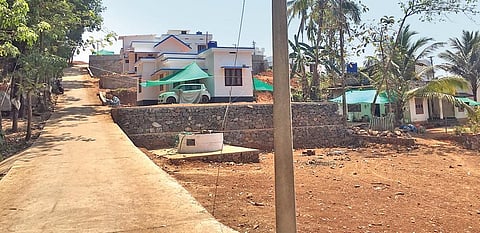

Kavalappara will never forget August 8, 2019.
At 7.30pm on the fateful day, a massive landslide triggered by intense monsoon rain buried 59 residents alive, wiping out a small community living beneath Muthappan hill at Kavalappara, a part of Western Ghats in the Nilambur assembly constituency in Malappuram.It was raining when Express team reached Kavalappara then. The entire area had a muddy red hue as the deep-red laterite soils that had caved in mixed with the rain water and flooded every nook and corner of the valley including the Chaliyaar river.
Now, almost one-and-a-half years later, the desolate patch of land is covered in plants. After the landslide, the government, aided by socio-religious outfits, rehabilitated 148 families from the deadly valley and provided all basic infrastructure. The authorities set up colonies dotted with 600-sqft houses, twin road connectivity, power and water connections. However, those who survived have yet to move on, emotionally.
“The new area has all the facilities. My wife and kids are happy here,” says K Krishnan. His eyes, however, reflect his grief of losing his friends and relatives in the disaster and moving away from the place he once called home. Though every colony resident has been rehabilitated, most still have a tale of sorrow to narrate – about the untimely death of their dear ones, a close relative or a friend. “Perhaps, it will take some time to fully recover from the shock,” he says.
People who lived close to the valley are also grief-stricken. Living alone in a thatched tile house situated just 10m away from ground zero, separated only by a road, septuagenarian Narayani Nadakkal cannot fight back tears as she narrates her ordeals after the landslide. Her husband died four years ago and their only daughter is married. She used to go to the houses, that are now buried, to sleep before disaster struck.
“Already, I am alone. My friends and neighbours who supported me are no more. The rest have been rehabilitated,” she says. She continues to stay in the same house. The heap of mud visible from her window still hides 11 bodies of her neighbours. The authorities could retrieve only 48 bodies out of the 59 who were declared dead. The wind blowing down from the hill and the valley bring back spine-chilling memories.
“I never believed in fairy tales. But the suffocating silence and the cold winds from the hill and valley often make me mad at nights. They could have rehabilitated me too as I am a lone elderly living in a thatched old house. I know I am not eligible for the rehabilitation technically as I am not a direct victim of the landslide and my thatched house is situated opposite to the victims’ houses. Now, I seek the support of people nearby and go to their houses at night to escape the haunting memories and loneliness,” she says. Shanavas, 49, who lives close to Narayani’s house, says soon after the landslide, the authorities provided counselling for those living nearby. “However, it has not helped purge the tragic memories. Our children were afraid to go out at night until recently as bodies of 11 people are yet to be recovered,” he says.
While the calamity changed their life, almost everyone in the region says the government and socio-religious outfits helped them bring their life to the track. Help poured in from across the state and outside and helped the victims find the lost rhythm of their life in just one-and-a-half years, they said.
While there were complaints the aid was provided unevenly, the rehabilitation was largely a huge success and all people from different walks of life, cutting across political lines and religious moorings, joined hands to support a community in distress. The development of other infrastructure, especially road connectivity and its standard, however, is not in tune with the development in other parts of Nilambur.
Pothukal panchayat, ruled by both the fronts last time following a split verdict, saw a clear mandate for Left in the 2020 local body elections. Kavalappara ward, won by CPM in 2015, elected an independent candidate in 2020.